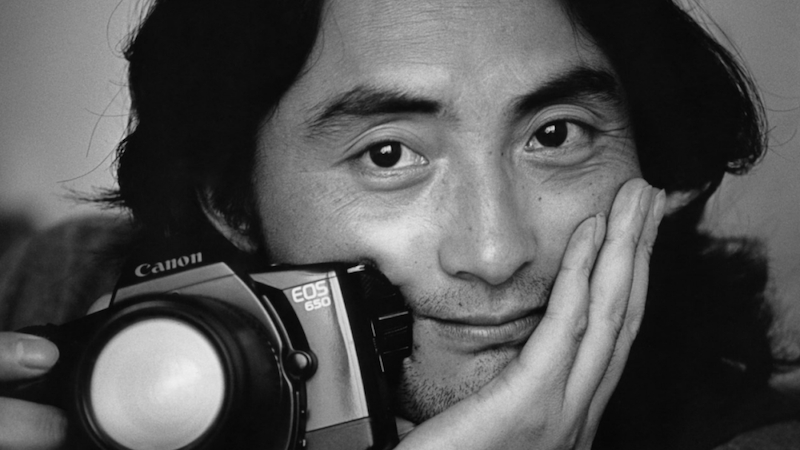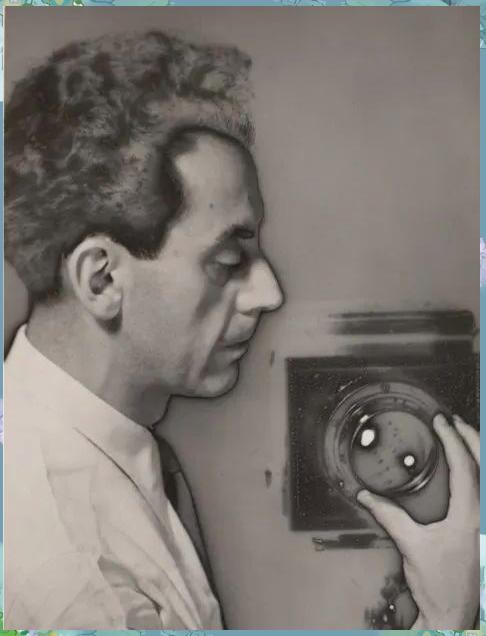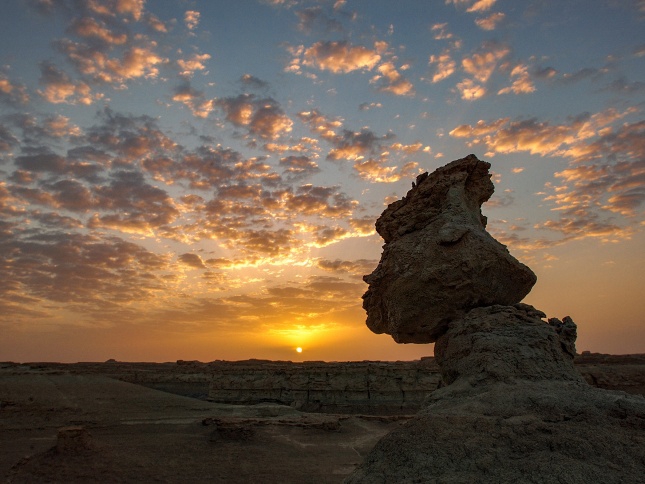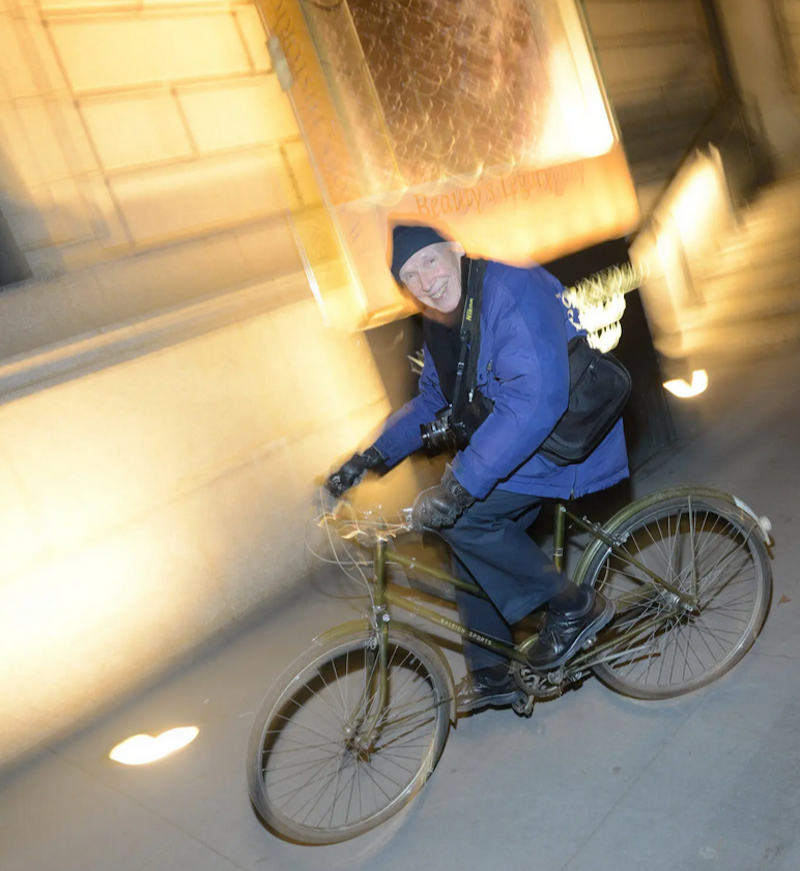
In the 1980s and 1990s, the famous photographer Xiao Quan used his camera to capture the unique faces of China's literary and art circles.
Recently, Xiao Quan came to Moganshan, Zhejiang, and left portraits of local people. On May 1, his solo exhibition "Moganshan Chronicles: Narratives of Jiangsu, Zhejiang and Shanghai from Xiao Quan's Lens" was exhibited at Zhejiang Moganshan Art Museum, showing the faces of people in Jiangsu, Zhejiang and Shanghai in his past photography through more than 100 photographs and multimedia video installations.

Xiao Quan was born in Chengdu, Sichuan in 1959. In 1980, Xiao Quan, who was serving in the Navy Aviation Corps, bought a Seagull 205 camera with the support of his family for 169 yuan. In the era when the average wage per capita was 40 to 50 yuan, he began to carry a camera and ride a bicycle to take pictures of his hometown. He also used the money he saved to buy a lot of photography magazines and learned techniques from those pictures. At that time, he saw the works of Cartier-Bresson, and in addition to admiring them, he also set a direction for himself.

Xiao Quan
The reporter of The Paper learned that the exhibition "Moganshan Chronicles: Narratives of Jiangsu, Zhejiang and Shanghai through Xiao Quan's Lens" is divided into three parts, covering the connection between Xiao Quan's artistic career and the Jiangsu, Zhejiang and Shanghai regions. From the more familiar masterpiece "Our Generation" which was shot in the 1980s, a series of famous artists in the literary and art circles, to the Jiangsu, Zhejiang and Shanghai figures including Zhou Xun, Chen Danqing, and Suzhou Yaji, as well as the Moganshan local creation unit, through local faces such as tea farmers, homestay owners, and young artists, the artist's latest local portraits shot in Moganshan are presented.
"Our Generation" in Film
In the 1980s, there was a boom in various cultural fields. Since then, Xiao Quan began to use his black-and-white images to record the literary pioneers of that era, from rock musicians to hazy poets, from folk dancers to film directors. These literary creators showed their youthful vigor under Xiao Quan's lens. When entering the exhibition hall, the first thing the audience saw was the black-and-white images of these literary creators: including Cui Jian with a cold and resolute look, Dou Wei lying in his bedroom listening to music, and Wang Anyi walking on the street.
Xiao Quan said that when he took photos, many of the people he chose were chosen based on the pull of fate.

Cui Jian photographed by Xiao Quan
One day in 1990, Xiao Quan heard that Sanmao was in Chengdu, so he knocked on her hotel room and expressed his wish to take a portrait of her. That afternoon, Sanmao put on "beggar's clothes", carried a large travel bag, and walked with Xiao Quan in the alleys of Chengdu. At that time, there was a bamboo chair buckled on the door, and Sanmao threw away her sandals and walked up, sitting on the ground with a stubborn and bleak look. Sanmao said to Xiao Quan: "Do you know? I was a teenager and twenty years old, with short hair and a bag on my back, wandering around the world. More than ten years have passed, and I am still alone. Look, what a stubborn woman I am..." After taking photos of Sanmao, Xiao Quan published a book "Bird of Paradise". This album fell into the hands of Yang Liping, who asked someone to find Xiao Quan and asked him to take photos of her. For this reason, Yang Liping also became the person Xiao Quan photographed for the longest time.

Sanmao photographed by Xiao Quan

Yang Liping photographed by Xiao Quan
At first, Xiao Quan had no conscious desire to record the outstanding creators of an era until 1988, when he saw a "magazine" called "Xiangwang" consisting of several pages of photocopies and was deeply attracted by a photo of the American poet Ezra Pound. "It shows a typical European gentleman - a top hat, a coat, a fine checkered suit with an open white shirt collar, and a hand-held cane, walking on a small bridge. This is a photo of Pound taken in Venice in 1963. The poet is old, wearing a green hat, and leaning on a cane. I stared at the photo, and that was the feeling of deep loneliness of an intellectual." Inspired by the "Xiangwang" magazine, Xiao Quan traveled all over China and photographed those bright outlines.

Feng Zikai's daughter Feng Yiyin photographed by Xiao Quan
The exhibition also includes photos of Zhou Xun, Chen Danqing, and people from the southwestern literary and art circles gathering in Suzhou, all of which are related to Jiangsu, Zhejiang and Shanghai. Among these photos, the photo of Feng Yiyin is one that Xiao Quan likes very much. "It was very hot in Shanghai that day, and there was a power outage. She wanted to go back to her hometown to escape the heat, and I happened to meet her. She sat on a bamboo chair, and there was another bamboo chair next to her, which she and her father Feng Zikai used to cool off. And what she held in her hand was a painting Feng Zikai drew for her when she was 12 years old." Xiao Quan said.
The friendship between him and Marc Riboud
In the black-and-white images on the first floor of the museum, visitors can also see an elderly foreigner holding a camera. He is the French photography master Marc Riboud, who is Xiao Quan's mentor and helpful friend.
Marc Riboud was the first Western photographer allowed to enter China to shoot after the founding of the People's Republic of China. Since 1957, he has visited China more than 20 times and left many classic photos. In 1993, when Marc Riboud came to China to shoot, the Cultural Counselor of the French Consulate in Guangzhou hoped that Xiao Quan would recommend an assistant who could speak English or French and take him around Guangzhou. Xiao Quan volunteered to accompany Marc as an assistant throughout the shooting. Xiao Quan took him to Guangzhou Railway Station and Electric City, and Marc aimed his camera at the flow of people coming and going.

Marc Riboud photographed by Xiao Quan
Marc brought with him three rangefinder M6s, two SLR R5s, and four lenses, all of which were fixed-focus lenses. Xiao Quan carried Marc's backpack, and whenever he needed a lens, he would hand it to him accurately in the shortest possible time. In an interview with The Paper, Xiao Quan recounted a small episode, "Once, Marc Riboud went to Cartier-Bresson's home to take a family photo for Cartier-Bresson. Marc made a mistake, and the film didn't get tangled. Cartier-Bresson knew it and said it didn't matter, I'll put on a suit, and you take another shot. I also made mistakes when I followed Marc in Guangzhou. Once, he saw a traffic policeman issuing a fine, and motioned for me to give him the lens quickly. As a result, I misunderstood, and the lens fell to the ground and broke. The lens was eventually repaired in Switzerland, which was very expensive, but he didn't blame me at all, just like when he made a mistake, Cartier-Bresson didn't scold him."
In 1995, Xiao Quan and Marc Riboud worked together again when they were filming Zhang Yimou's film "Raise the Red Lantern" in Shanghai and Suzhou, and photographed the streets of Shanghai in their spare time. "On the Bund, we watched the Oriental Pearl Tower just being built, and Marc said to me, 'I have a friend who takes a lot of important photos in her spare time. Your country is undergoing tremendous changes. So, you have to take your work seriously, maybe in 5 or 10 years, your work will become very important.'" Xiao Quan recalled that this was Marc Riboud's encouragement and spur to him.

Marc Riboud in Shanghai in 1995, on the set of Zhang Yimou's film "Raise the Red Lantern", photographed by Xiao Quan

Marc Riboud on the rooftop of Shanghai Tower, photographed by Xiao Quan
In 2012, the United Nations held the "Conference on Sustainable Development" in Rio de Janeiro, Brazil. Xiao Quan received an invitation from his good friend, actress Zhou Xun, and director Du Jiayi, to do a public welfare photo shoot for the United Nations, filming the expectations of ordinary Chinese people for the next 20 years. More than 200 people from all walks of life and nationalities in Beijing participated in the project. Xiao Quan and his team spent five days shooting a picture album titled "2032: The Future We Expect". The United Nations sent these photos taken by Xiao Quan to more than 170 member states, and put the blessings and expectations of the Chinese people into a time capsule at the United Nations headquarters, waiting to be taken out 20 years later.

Ban Ki-moon holding the album "2032 - The Future We Expect"
"Portraits of the Times" taken in Moganshan
During the same period, Xiao Quan traveled to more than ten cities across the country, taking photos of ordinary people from all walks of life. This shooting project is named "Portraits of the Times", which uses these ordinary but unique faces to form a portrait of China in the early 21st century. Over the past ten years, he has traveled to nearly 20 cities including Jinchuan, Nanchang, Hangzhou, Chongqing, and Zunyi. Every time he shoots in a city, he talks to the subjects to understand their past and the ties with the city, so as to freeze the "decisive emotions" under the lens. Today, Xiao Quan's latest shooting location is Moganshan, where he shoots local portraits. This part of the content is also exhibited on the second floor of the art museum.

Xiao Quan photographed in Mogan Mountain
In April, Xiao Quan spent most of his time living and shooting in Moganshan, experiencing and understanding the local customs and practices of Moganshan and incorporating them into his works. He traveled all over Moganshan, from tea mountains to bamboo forests, naked castles to Jiaotong noodle restaurants, and these cultural landmarks of Moganshan were the best locations for filming. Correspondingly, the local people who worked and lived in these places also became the faces of Moganshan that he hoped to find.

Runners who just finished the Mammoth Trail Race, photographed by Xiao Quan

Young people attending the Moganshan International Aircraft Carnival, photographed by Xiao Quan
Xiao Quan said, "There is a sericulture expert named Mr. Wu Bingkun here. When I took his portrait, it was the time of the China-U.S. tariff war. Behind him was Chairman Mao's Quotations, which has been a hot topic on the Internet recently. Another old man is Wang Fengming, a writer in his 90s. He sent me many of his books. I asked him if he could read the words in the books clearly. He said, 'How can I not read such big words clearly?' These shooting stories are very interesting."

Photographed by Xiao Quan, inheritor of the Huangde Longya intangible cultural heritage

naked Castle collector couple, photographed by Xiao Quan

Jiaotong Noodle House, photographed by Xiao Quan

Writer Wang Fengming, Photographed by Xiao Quan
Xiao Quan said that German photographer August Sander had hoped to photograph the proud Germanic people and the faces of an era, while he hoped to photograph the portrait of China and show the spirit of the Chinese people.
Note: This exhibition is co-organized by Deqing County Culture and Tourism Development Group Co., Ltd. and Deqing County Culture and Tourism Development Holdings Co., Ltd.
The exhibition will run until July 25th.
- RXVcTKygGDHhCqV08/05/2025
- XuhRjioIDEogro08/04/2025


